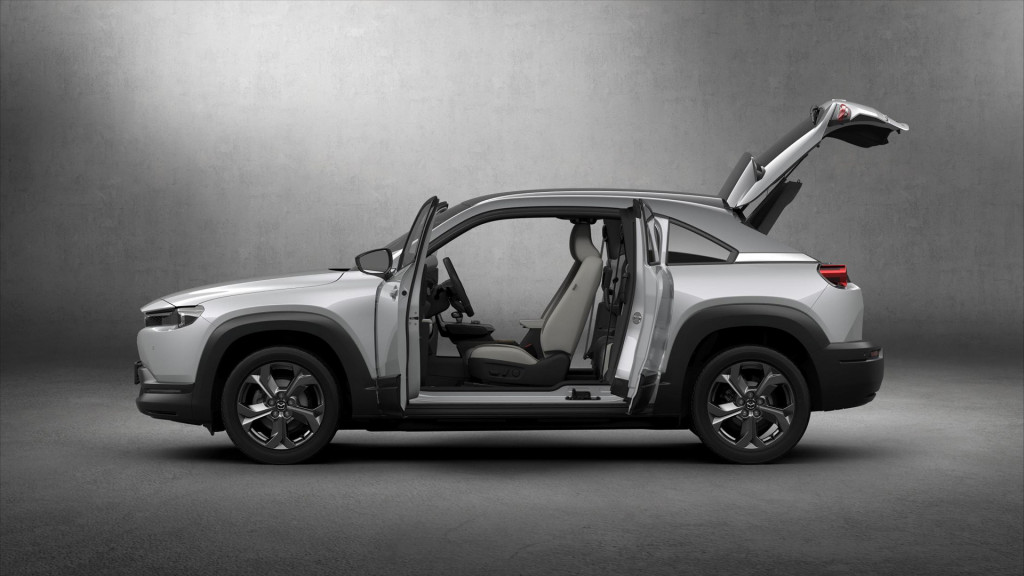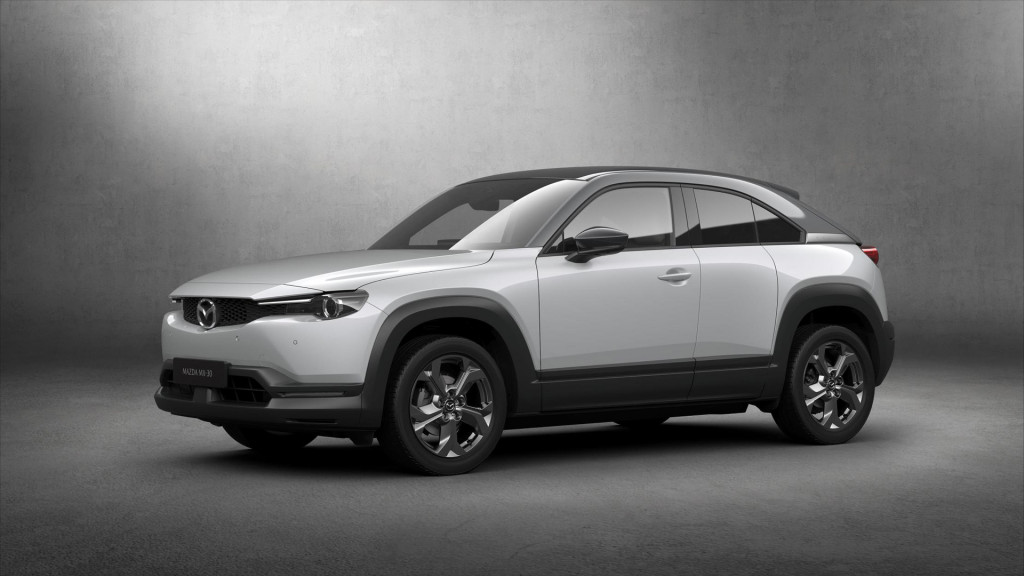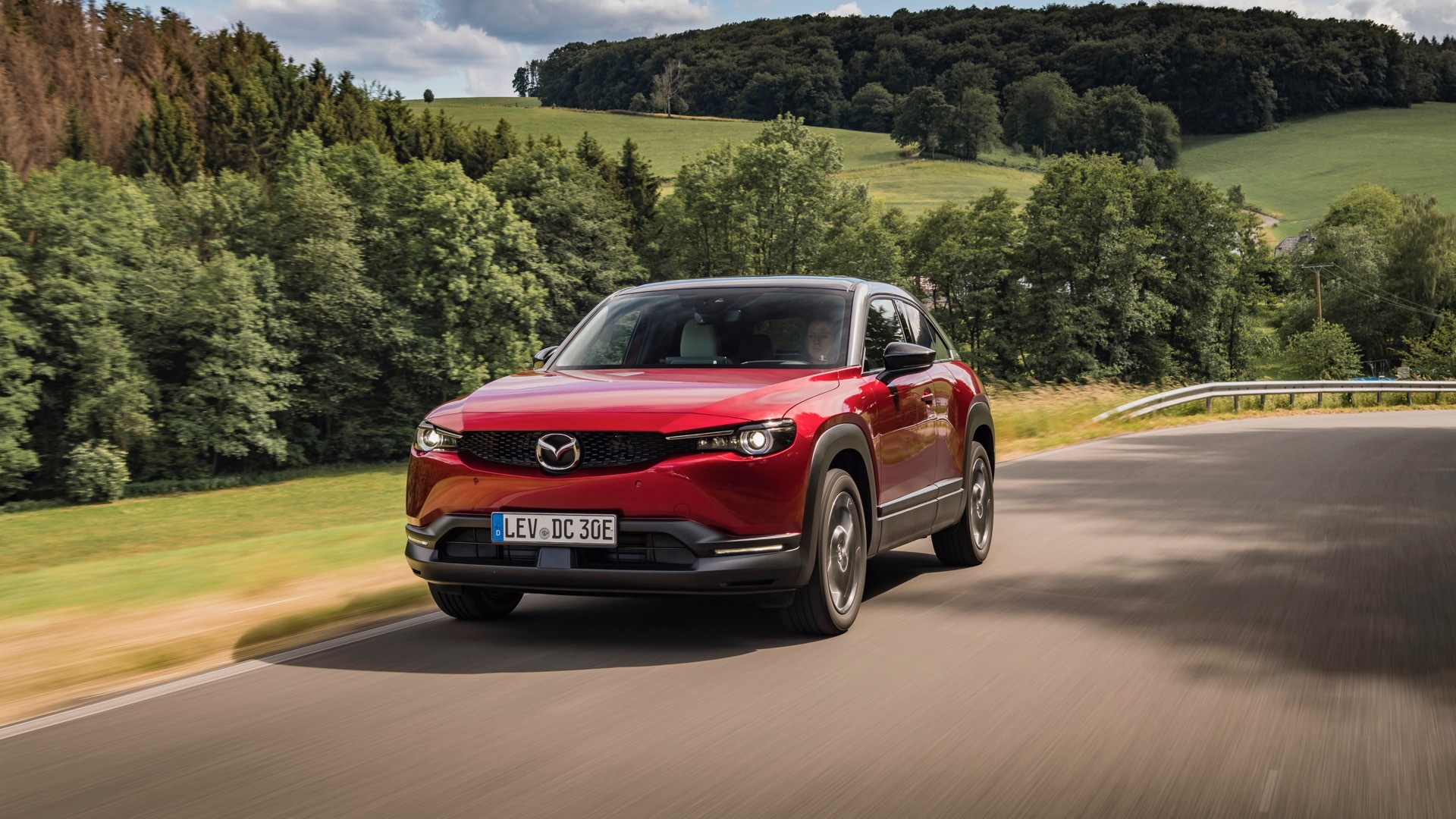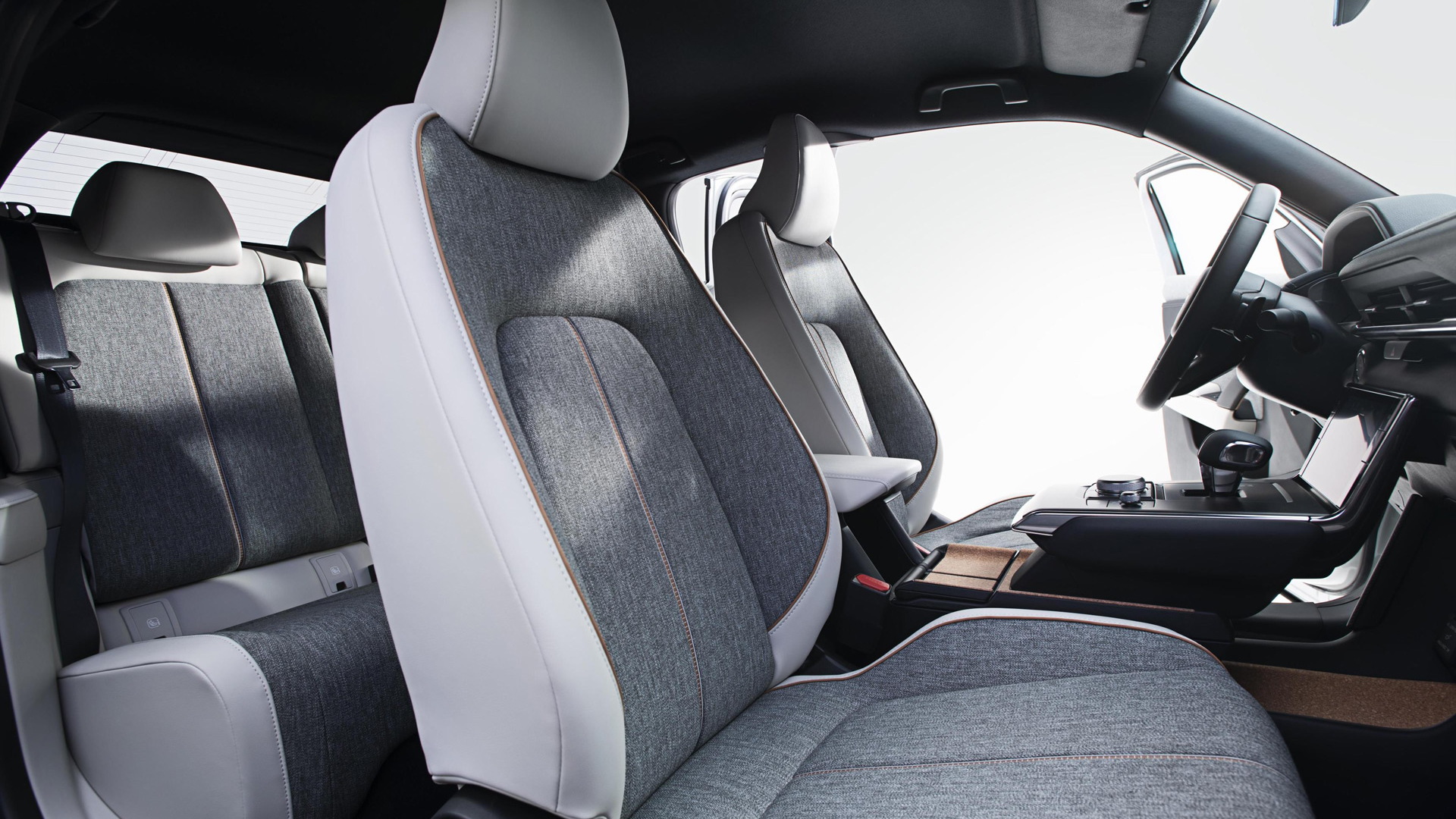Mazda has confirmed that the rotary engine will return to the U.S. in a “series plug-in hybrid” version of the MX-30 crossover that will also be offered to Americans in battery electric form.
The company hasn’t yet released details about timing or availability, and it hasn’t offered a rotary-engined car since the RX-8 sports car ended production in the 2011 model year.
It’s fitting that the MX-30, which is Mazda’s first regular-production electric car, has a different look than anything else in the Mazda lineup. Although the five-seater MX is the same 173 inches long as the CX-30, the MX’s rear-hinged rear doors and the slope of its roofline give it a more abbreviated, sporty-hatchback profile in the upper half, while the somewhat high midline and rugged-looking lower-body showcase activity-focused SUV cues.

Mazda MX-30

Mazda MX-30

Mazda MX-30
Mazda revealed the offbeat MX-30 concept in October 2019. With the MX (Mazda eXperimental) nomenclature rather than the RX (Rotary eXperimental) badge, the model didn’t give away any intent to go rotary at that time.
The company’s intent to bring the rotary back as a range extender dates back a decade, but company officials have finally hinted the past couple of years that it’s been near production-ready. Masashi Otsuka, Mazda’s North American VP of R&D and design, told Green Car Reports in early 2019 that a significant amount of research and development work has been done in the U.S. on what he termed a rotary range-extended drive system—termed XEV by a top powertrain executive in a different interview—although then it wasn’t clear which vehicle would feature such a system.
In October, Mazda confirmed that the rotary range extender was on the way for the MX-30, but it made no assertion that’s the way we might get it in the U.S.
For Japan and Europe, the MX-30 is already offered in battery electric form, with a 35.5-kwh battery pack and a range of 124 miles in the WLTP cycle. In Europe it sells for the equivalent of about $37,000, prior to incentives.

Mazda MX-30
In calling it a “series plug-in hybrid,” as Mazda North American Operations did to Green Car Reports, that underscores an important technical detail: that there will likely be no mechanical connection from the engine to the drive wheels. As such, it would be much more like the BMW i3 REx than the Chevrolet Volt
Mazda likely had to go through some hoops to bring the rotary here—either in the form of limiting the rotary’s rev band or by pre-warming some of its emissions components. You can bet there’s an interesting backstory, yet to come.



















